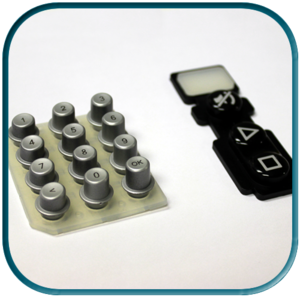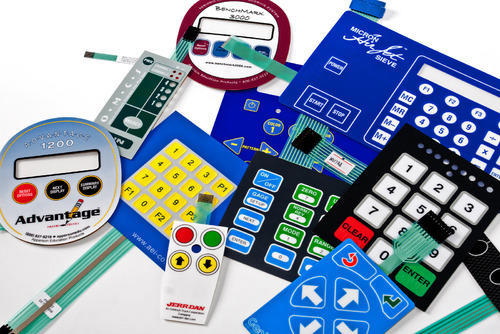Check Out the Variety of Industries Benefiting from Membrane Switches Innovation
Discover the Future of Control Interfaces: Why Membrane Layer Switches Over Are Getting Popularity
As sectors progressively focus on user-friendly and efficient control user interfaces, membrane layer switches are arising as a compelling solution that incorporates performance with design versatility. Their resilience and portable nature make them particularly matched for a range of applications, from medical care to consumer electronic devices. With the increase of wise technology and sustainability problems, the advancements and capabilities surrounding membrane layer changes warrant more detailed evaluation. What details advantages do they use that could redefine our interactions with innovation in the coming years?
Understanding Membrane Layer Buttons
Membrane layer buttons are indispensable parts in modern-day digital tools, offering as interfaces between users and devices. These switches are composed of numerous layers, commonly consisting of a visuals overlay, a spacer layer, and a circuit layer.

Toughness is another vital attribute, as membrane switches can be created to resist ecological elements such as moisture, dirt, and chemicals. This resilience makes them suitable for applications in extreme conditions. Generally, understanding the framework and function of membrane layer switches is vital for appreciating their function in the evolution of customer interfaces in today's technology-driven world.
Secret Benefits of Membrane Buttons
Offering an array of benefits, membrane buttons have ended up being a recommended option in numerous applications (Membrane Switches). One of the primary benefits is their portable style, making it possible for producers to optimize area in tools without compromising performance. Membrane buttons are light-weight, which is especially beneficial in mobile electronic gadgets

In addition, these switches give outstanding longevity. Created from adaptable products, they are resistant to dust, dampness, and a variety of environmental aspects, making them ideal for rough problems. This resilience typically equates right into a much longer life-span compared to conventional mechanical switches.
Furthermore, membrane changes enable seamless combination of icons and graphics, supplying visual adaptability and boosting customer experience. Modification options are comprehensive, allowing brands to create unique user interfaces that straighten with their item identity.
Another key benefit is their simplicity of cleaning and upkeep. The level surface area of membrane switches stops the build-up of dirt and crud, making them optimal for sanitary settings. Membrane layer buttons are affordable, as they can be produced in high quantities at lower expenses, making them obtainable for a wide range of markets. These aspects jointly contribute to their increasing popularity in modern-day control user interfaces.
Applications Throughout Industries

A myriad of markets are progressively adopting membrane layer switches because of their versatility and performance. These control interfaces are particularly widespread in the auto industry, where they are utilized in dashboards and infotainment systems, providing a easy to use and sleek user interface. In the clinical field, membrane this link layer switches facilitate the procedure of diagnostic tools and individual tracking systems, ensuring reliability and ease of use in crucial circumstances.
Furthermore, the customer electronics industry gain from membrane layer buttons in tools such as microwaves and push-button controls, enabling structured style and boosted durability. Membrane Switches. The aerospace field additionally makes use of membrane layer buttons in cabin controls, where room restrictions demand portable and reliable design solutions
Additionally, the commercial sector employs membrane buttons in equipment control board, providing resilience versus severe environments and making certain functional effectiveness. Retail atmospheres have actually accepted membrane layer switches in point-of-sale systems, boosting customer interaction while maintaining visual appeal.
Style Patterns in Membrane Switches
Developing together with technological advancements, design patterns in membrane switches are progressively concentrated on improving individual experience and aesthetic appeal. Modern membrane buttons are being designed for simplicity and intuitive use, permitting individuals to navigate interfaces effortlessly. This change in the direction of user-centric design highlights responsive feedback, ensuring that customers obtain prompt verification of their actions.
Furthermore, customizable graphics and shades are coming to be common attributes in membrane layer switch styles. This flexibility permits suppliers to produce customized user interfaces that line up with branding and specific customer needs. The unification of backlighting is one more prominent pattern, as it not only improves visibility in low-light problems but likewise adds an aesthetically striking element to the general design.
In addition, the trend in the direction of light-weight and thin products is gaining grip, enabling sleeker layouts that can perfectly incorporate right into various applications. This shift not just enhances aesthetics yet additionally adds to the overall performance and resilience of the buttons. Finally, environmentally friendly products are progressively being used, showing a broader activity in the direction of sustainability in product style. These style fads jointly underscore the growing importance of incorporating form and feature in the development of membrane buttons, inevitably like it enhancing the customer experience.
Future Overview for Control Interfaces
The future of control user interfaces is positioned for substantial change as emerging innovations remain to reshape individual interactions across different devices. The assimilation of innovative products, such as adaptable electronics and conductive inks, will improve the adaptability and capability of membrane layer switches, making them progressively versatile to a variety of applications. Furthermore, the rise of the Net of Things (IoT) will drive demand for even more instinctive, easy to use interfaces that can effortlessly integrate with smart devices.
As expert system and artificial intelligence advance, manage interfaces will likely include even more tailored functions, allowing customers to connect with devices in manner ins which are tailored to their practices and preferences (Membrane Switches). This change in the direction of user-centric layout will certainly place membrane layer buttons as a vital gamer in the market, particularly in sectors like healthcare, vehicle, and consumer electronic devices
Additionally, the press for sustainability will motivate makers to explore eco-friendly materials and manufacturing approaches, guaranteeing that the future of control user interfaces straightens with environmental factors to consider. Generally, as technology proceeds to advancement, membrane buttons will come to be increasingly innovative, paving the means for cutting-edge control solutions that improve user experience and operational performance throughout varied sectors.
Final Thought
In conclusion, the raising adoption of membrane layer changes highlights their importance in the development of control user interfaces. As straightforward user interfaces come to be important in the context of IoT and AI developments, membrane layer switches are placed to play a critical role.
As markets progressively focus on efficient and easy to use pop over here control interfaces, membrane layer switches are emerging as an engaging remedy that combines functionality with design versatility.Toughness is an additional vital function, as membrane switches can be developed to stand up to environmental factors such as wetness, dirt, and chemicals.Developing together with technological advancements, design trends in membrane layer switches are progressively focused on boosting customer experience and aesthetic charm. Modern membrane switches are being created for simpleness and intuitive use, permitting customers to browse user interfaces effortlessly. These design patterns collectively emphasize the growing importance of incorporating form and feature in the advancement of membrane buttons, ultimately improving the customer experience.